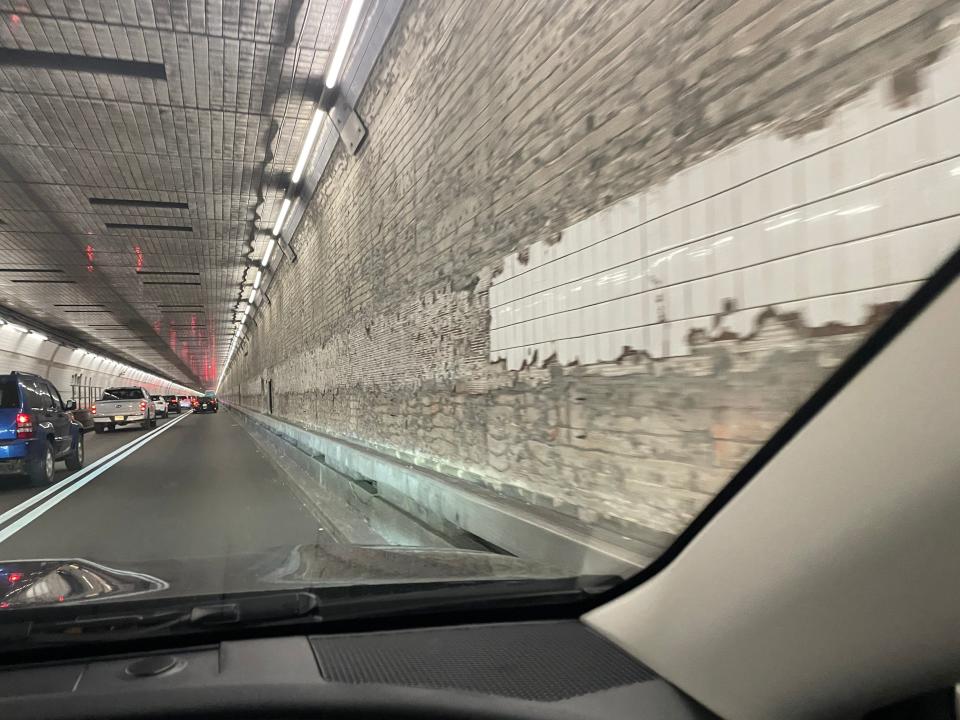The tiles that line the inside of the Holland Tunnel are gone. Here's why
If you’ve taken the Holland Tunnel out of Manhattan to New Jersey recently, you may have noticed that all the shiny white tiles that line the inner walls of the tube have been pulled off.
The tiles are being replaced as part of a larger project by the Port Authority of New York and New Jersey to address salt damage in the tunnel caused by Superstorm Sandy in October 2012.
The $364 million project is also designed to make the tunnel more resilient against future large storms.
Story continues below photo gallery.
The rehabilitation work includes major elements damaged during Sandy, such as repairs to low-voltage and medium-voltage cables, fire detection and alarm systems, a voice communication system and fiber-optic cables, and pump room equipment and controls.
Why does the Port Authority use tiles in the Holland Tunnel?
The tiles are being replaced with a similar material. The two tubes are lined with a combined 6 million ceiling and wall tiles.
The Port Authority says tiles were chosen for the tunnel because they are durable, easy to clean, and modular so they are easy to replace in small sections.
In addition, tiles create a hygienic light condition in the tunnel — they are reflective, which is beneficial for a low-light condition such as inside a tunnel.
The repair work occurs during overnight closures of one of the tubes six nights a week, from 11 p.m. to 5:30 a.m. Sundays to Thursdays and midnight to 9 a.m. on Fridays.

The South Tube work is mostly complete, including the tiling, and the North Tube is in progress.
The Port Authority expects the project to be complete by late 2025.
How Superstorm Sandy affected the Holland Tunnel
When Superstorm Sandy pummeled the region in 2012, it pushed a 12-foot wall of water ahead of it into New York Harbor and Newark Bay, flooding vital infrastructure, including many tunnels, roadways and buildings.
The 1.6-mile Holland Tunnel, which runs beneath the Hudson River between lower Manhattan and Jersey City, opened in 1927. It is named after its first chief engineer, Clifford M. Holland, who died before the tunnel was finished.
The maximum depth of the roadway to high water is 93 feet. Today the tunnel handles nearly 30 million vehicles a year.
This article originally appeared on NorthJersey.com: Where did all the tiles inside the Holland Tunnel go? What's happening

